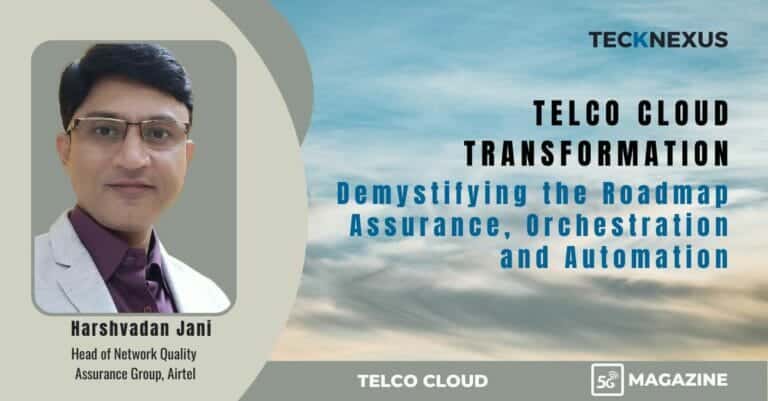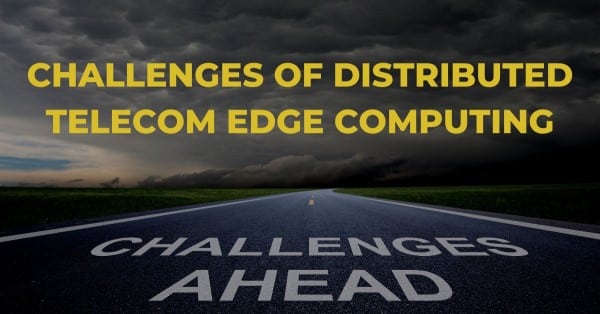Home » 5G Magazine » The Shifting Sands of the Network Function Orchestrator Landscape
The Shifting Sands of the Network Function Orchestrator Landscape
All MANOs will include network service orchestration in their ambit. VM-based VNFs will continue to find acceptability on account of strong legacy among telcos and enterprises alike. And K8s is here to stay.
- Last Updated: March 19, 2023
Log In or Register to Access This Content
Login
Register
Login with LinkedIn
Related Magazine Content
- Article & Insights
- November 9, 2023
Metaverse has been gaining traction in recent years, and it’s becoming increasingly important for businesses to be aware of. But what is the Metaverse? In this blog post, we’ll take a deep dive into this concept and explore its history and how it is evolving with related technologies. We’ll also discuss Metaverse challenges.
- Article & Insights
- July 13, 2023
This comprehensive blog post delves into how private wireless networks are the catalyst for innovative change across diverse industries. From manufacturing to aerospace, it unravels the potential of private networks in enhancing operational efficiency, driving innovation, and paving the way for future advancements.
- Article & Insights
- June 22, 2024
This blog post presents a comprehensive comparative analysis of private and public wireless networks – pros and cons, exploring security, control, customization, network performance, cost, maintenance effort, coverage, and ease of deployment. This insights will assist you in making informed decisions regarding the most suitable network option for your specific needs.
- Article & Insights
- March 18, 2024
“The Evolution of Private Wireless Networks: An In-depth Exploration into the Past, Present, and Future” offers a comprehensive exploration of private wireless networks. The article traces their development from proprietary technologies to LTE and 5G, while also forecasting their future influenced by emerging technologies and regulatory changes. A concise guide to understanding the past, present, and potential future of these pivotal communication systems.
- Article & Insights
- March 16, 2024
There are specific areas from which telcos will mine the revenue. But the key 5G monetization strategy for telcos would be to invest in all 5G standalone (SA) network aspects. It will bring different ecosystem partners together, help upgrade charging models, strategize usage of telecom APIs, and launch network slices to tap enterprise customer segments. All these would be driven by bringing high-level end-to-end automation and a solid orchestration platform to start services to consumers quickly.
- Article & Insights
- March 16, 2024
Edge computing is a concept that piggybacks off the ideas of cloud computing but differs in how it handles heavy processing. MEC delivers cloud computing capabilities and an IT service environment at the edge of the cellular network. It allows compute resources to be deployed closer to the edge of the network, in effect “transporting” cloud capabilities to the edge to overcome latency and network reliability issues.
- Article & Insights
- November 10, 2024
What is a telco cloud? How is the difference between telco and IT cloud? What are the industry solutions to migrate to telco cloud? Who are the leading telco and IT cloud vendors? What are their solution offerings and strategies? How can telcos successfully migrate to telco cloud?
- Article & Insights
- November 10, 2024
In a world where operator budgets are squeezed, and the personnel required to keep up with the demand for services, operators are streamlining their network operations to manage OPEX and CAPEX. Therefore, finding a way to keep pace with customer expectations and monitor the network efficiently is becoming more and more imperative.
- Article & Insights
- November 10, 2024
With 5G and Edge computing, there is an explosion of management complexity because there are hundreds of software instances (that include edge applications and private 5G applications), tens of thousands of edge locations, and tens of infrastructure providers. Existing approaches and solutions are not able to adequately scale to address this complexity.
- Article & Insights
- November 10, 2024
As the 5G rollout is well underway, operators need to leverage technology solutions that can help them achieve network synchronization quickly, securely, and cost-effectively.
- Article & Insights
- November 10, 2024
Aether™ is ONF’s Enterprise-5G/LTE-Edge-Cloud-as-a-Service system. Aether provides mobile connectivity and edge cloud services for distributed enterprise networks, all provisioned and managed from a centralized cloud.
- Article & Insights
- November 10, 2024
Telco 5G network & IT teams are under pressure to deliver applications and services faster, out-maneuver competitors, and provide exceptional user experiences while facing tighter budgets and a severe lack of cloud specialist skills. While the move to cloud-native network operations is relatively new for operators, it’s old hat for enterprises and web/hyper-scalers.
- Article & Insights
- November 10, 2024
Who are the global top 12 telco cloud and IT cloud computing vendors? What are their offerings and strategies for enabling telco cloudification?
- Article & Insights
- November 10, 2024
Nephio is Kubernetes-based intent-driven automation of network functions and the underlying infrastructure that supports those functions.
- Article & Insights
- November 10, 2024
The Dickensian duality succinctly characterizes where we are with 5G — pushing towards monetization is challenging, commercially-available network slicing is fledgling at best, but 5G promises rewards for those enterprising and persistent.
- Article & Insights
- November 10, 2024
Earlier telecommunication systems were proprietary and purpose-built systems developed on a monolithic architecture. These systems ensured that telcos or enterprise entities were struck in a vendor lock-in model, scaling up on different telco-grade applications was time-sensitive, and innovation and automation depended on strategies adopted by OEMs. But time has shown us how telecommunication systems have fundamentally changed and evolved for good.
- Article & Insights
- March 16, 2024
Mobile Edge Computing (MEC), is challenging to implement and requires support for network parameters of most of the use cases. Telco Edge nodes are not only contained with network functions but also applications workloads are deployed to deliver services to edge serving devices.
- Article & Insights
- March 19, 2023
What is the cost of skipping CW Model Calibration? Why indoor coverage is so critical? What factors contribute to inaccurate prediction?
Whitepaper
As VoLTE becomes the standard for voice communication, its rapid deployment exposes telecom networks to new security risks, especially in roaming scenarios. SecurityGen’s research uncovers key vulnerabilities like unauthorized access to IMS, SIP protocol threats, and lack of encryption. Learn how to strengthen VoLTE security with proactive measures such as...

Whitepaper
Dive into the comprehensive analysis of GTPu within 5G networks in our whitepaper, offering insights into its operational mechanics, strategic importance, and adaptation to the evolving landscape of cellular technologies....
It seems we can't find what you're looking for.
Download Magazine
With Subscription

































